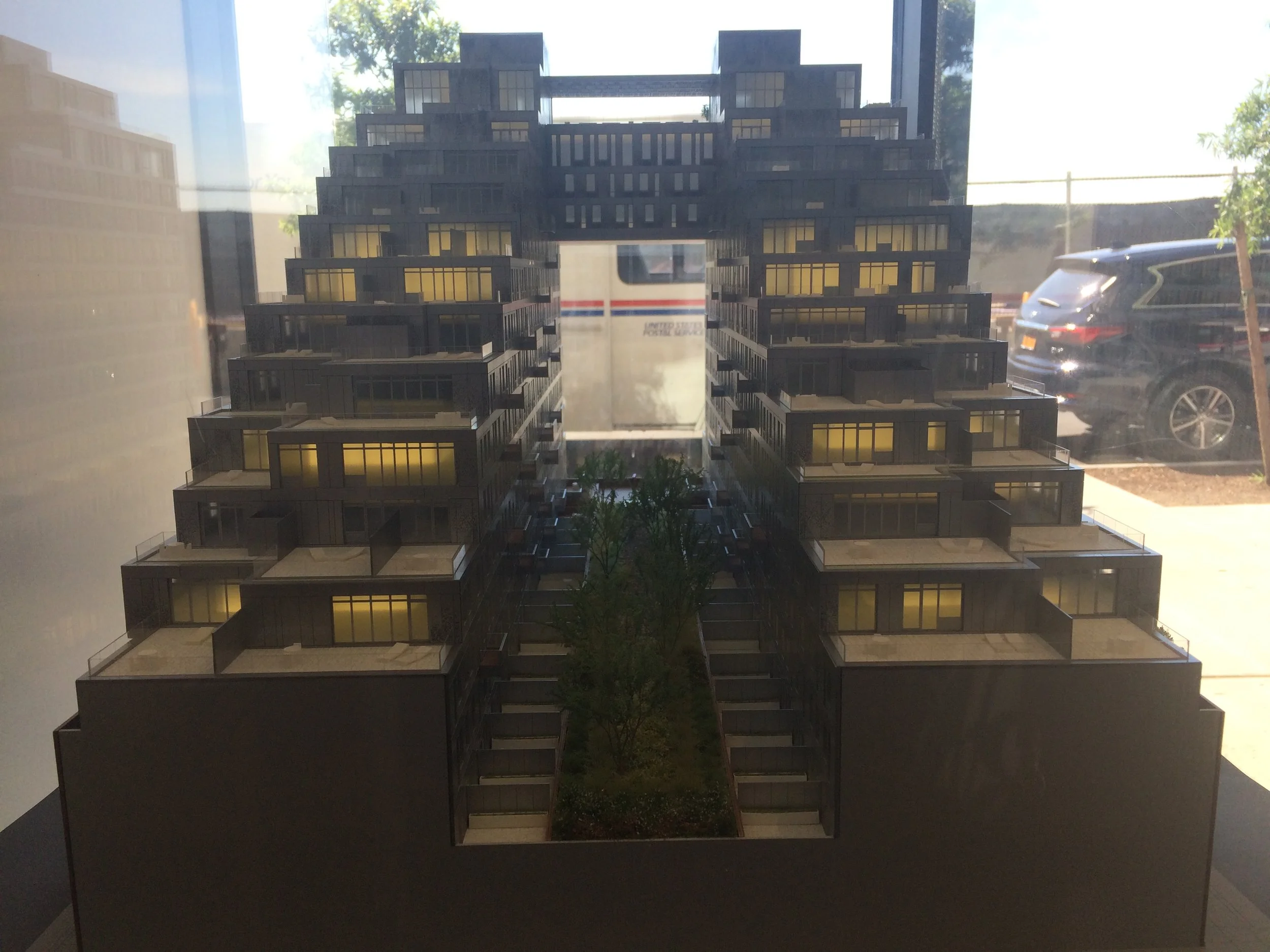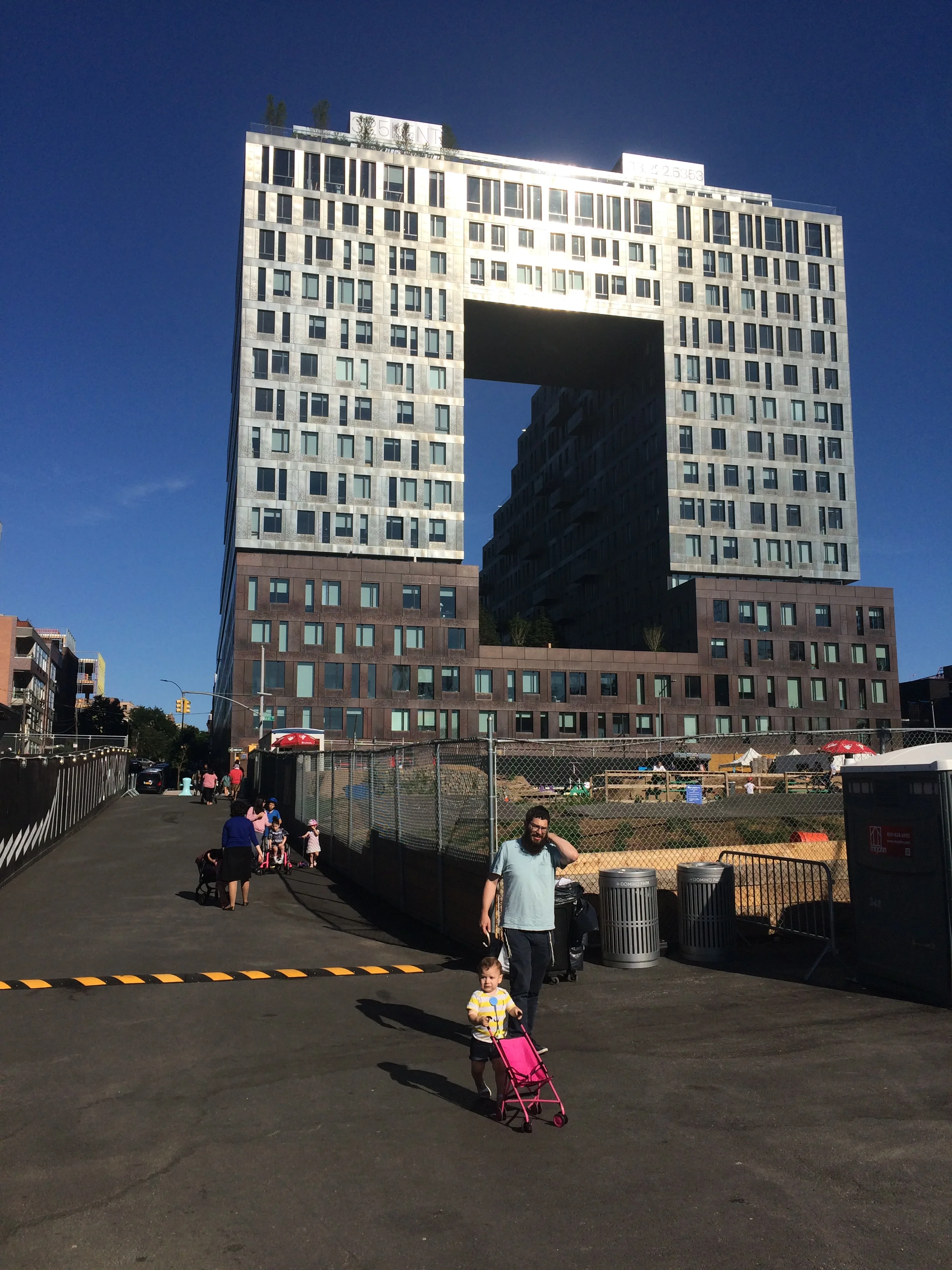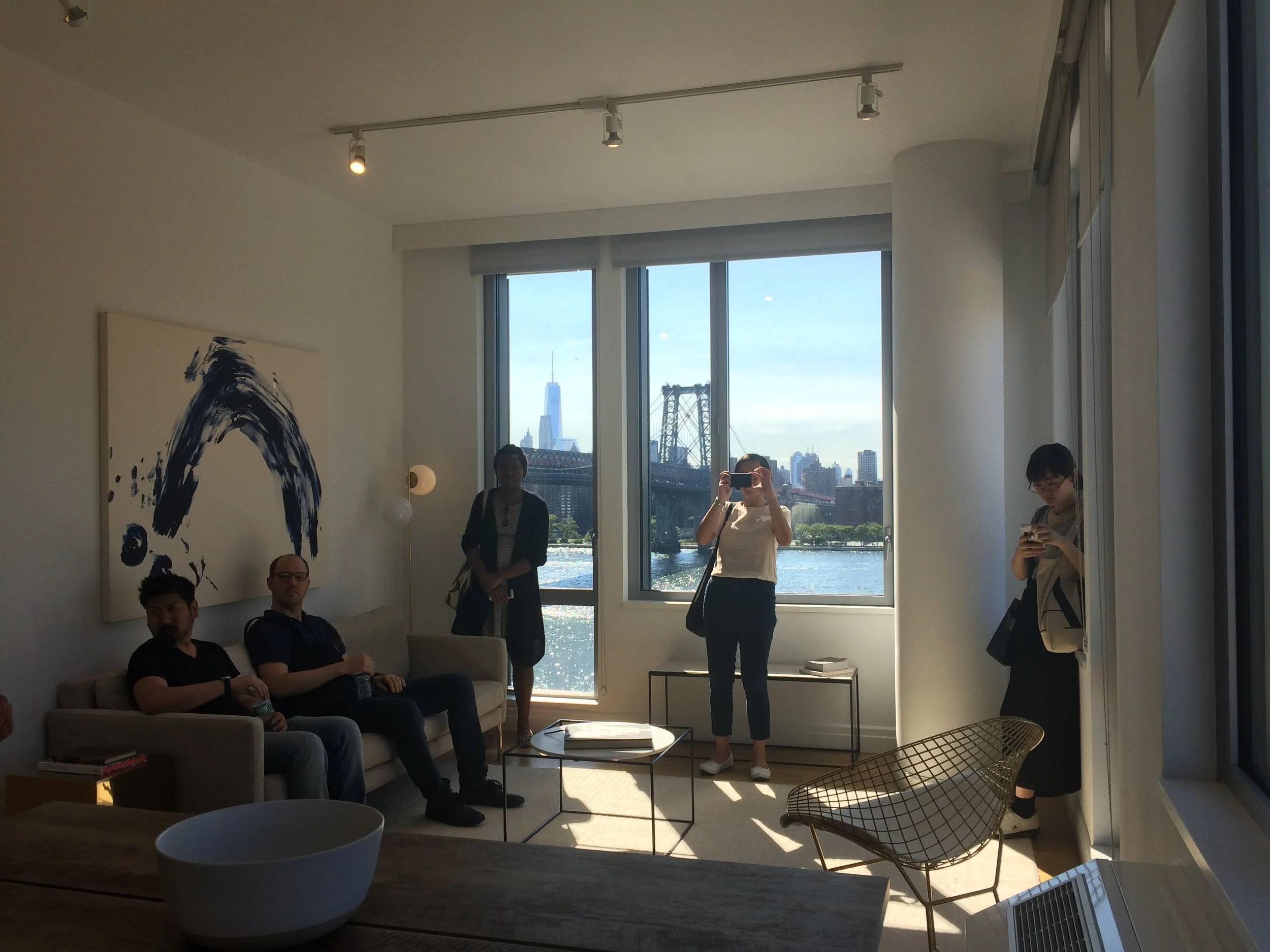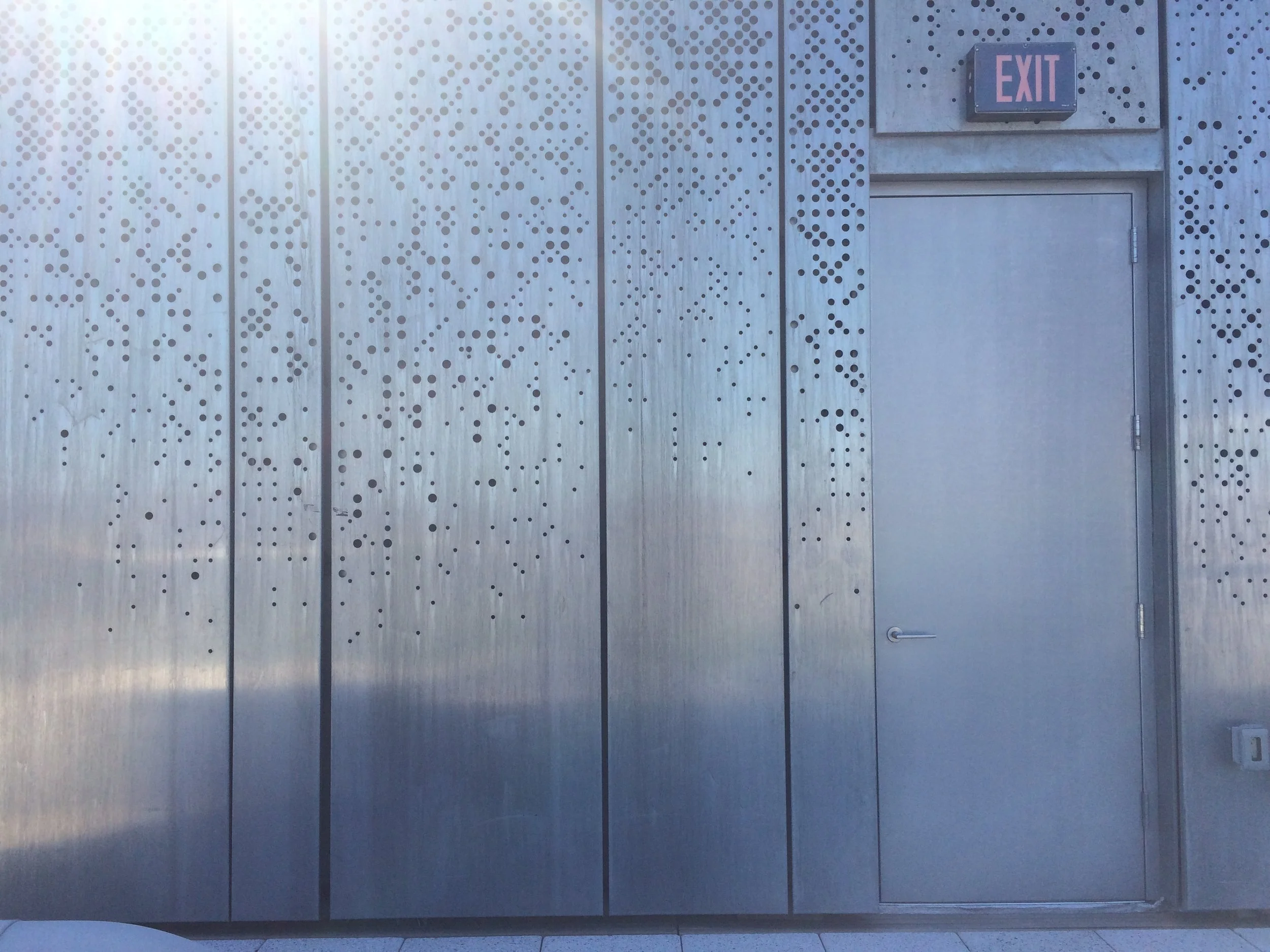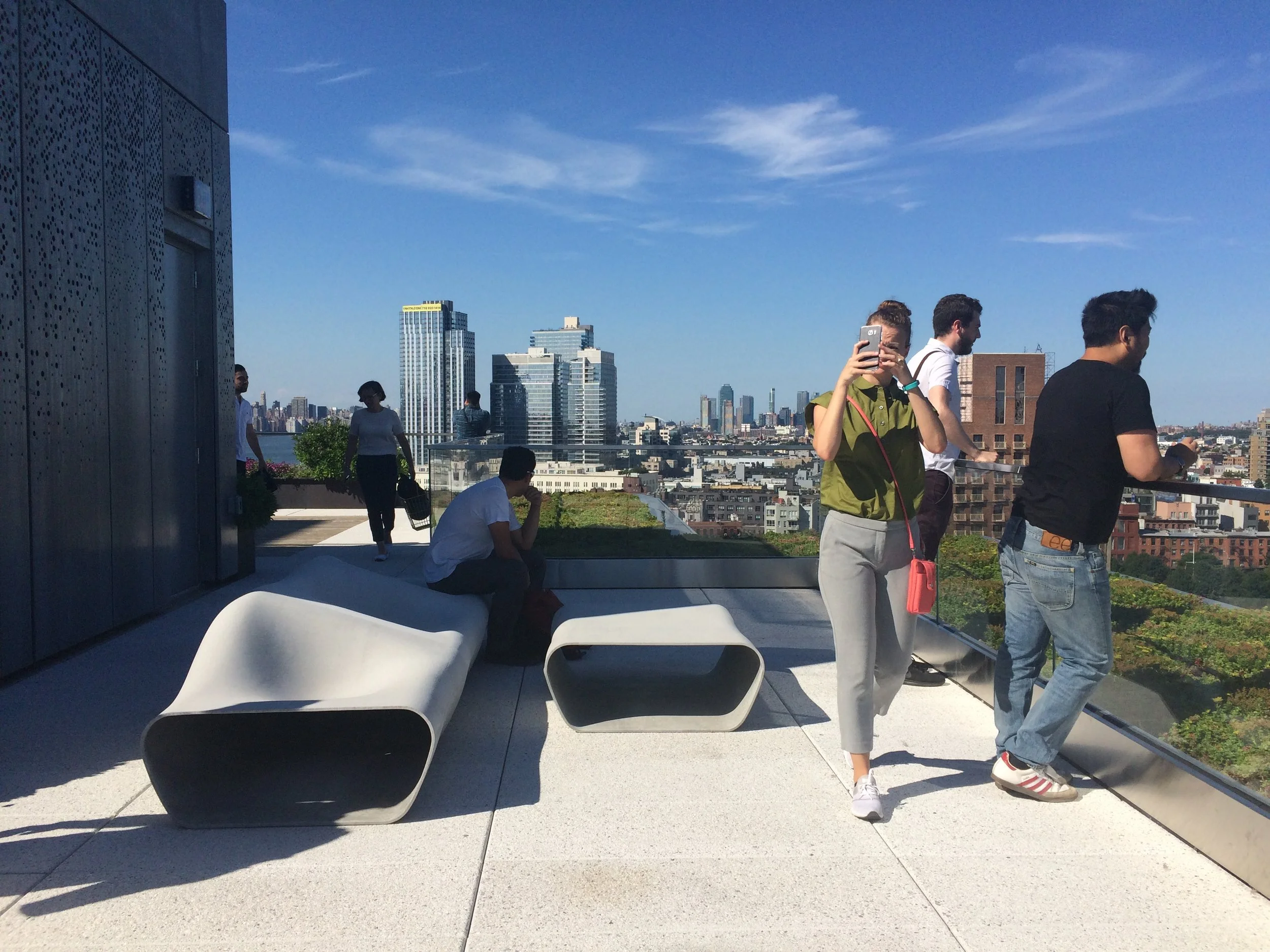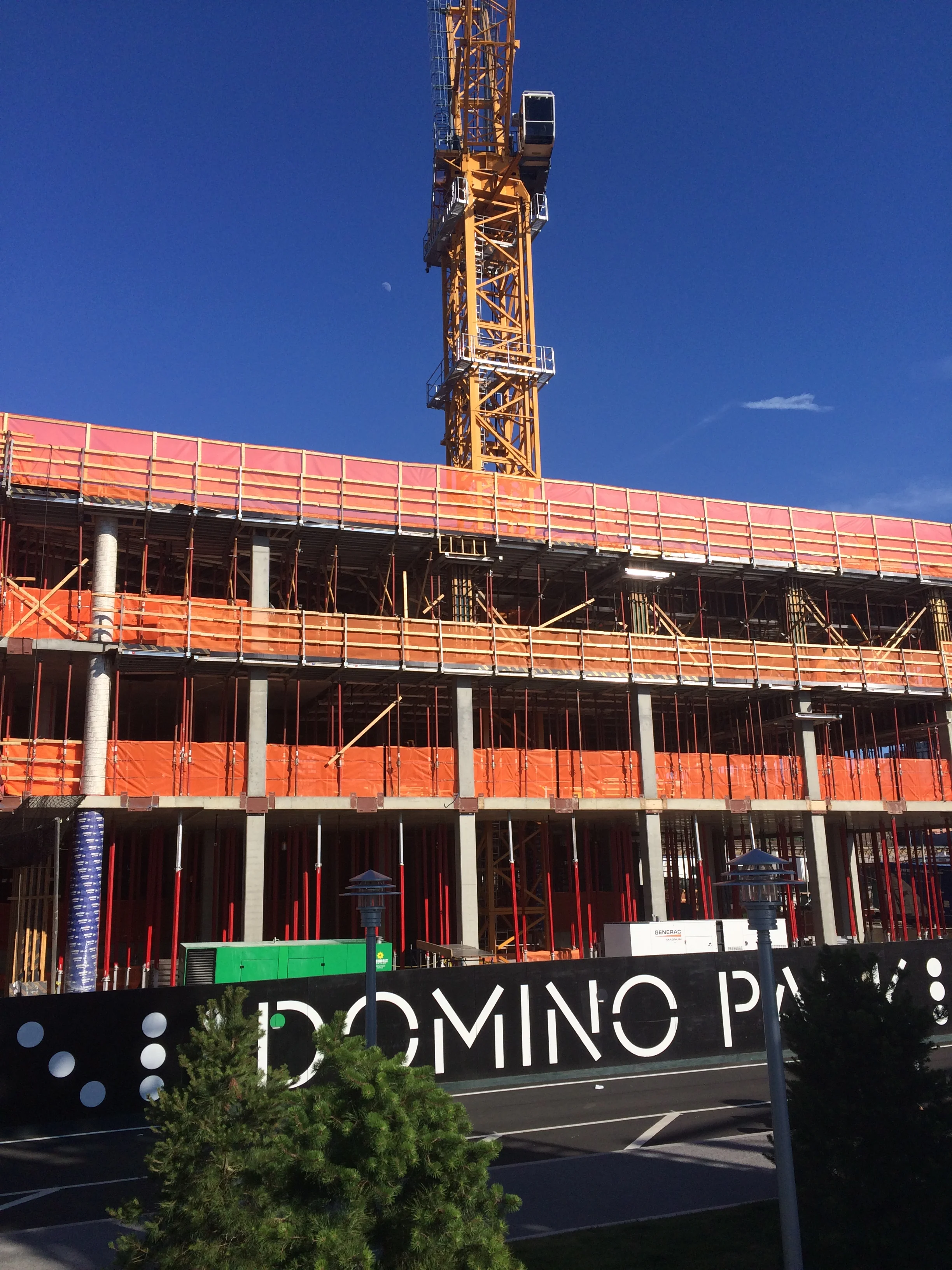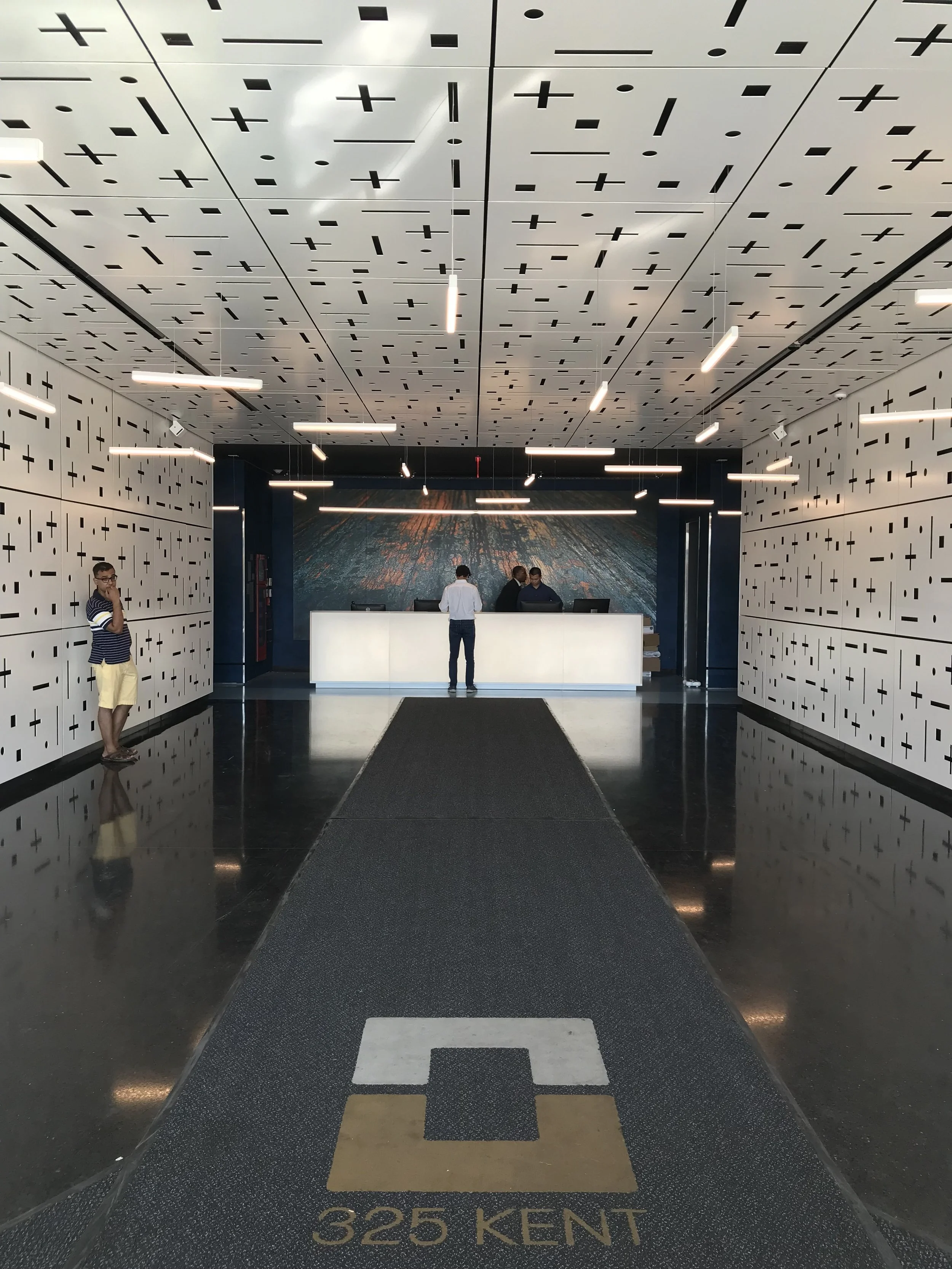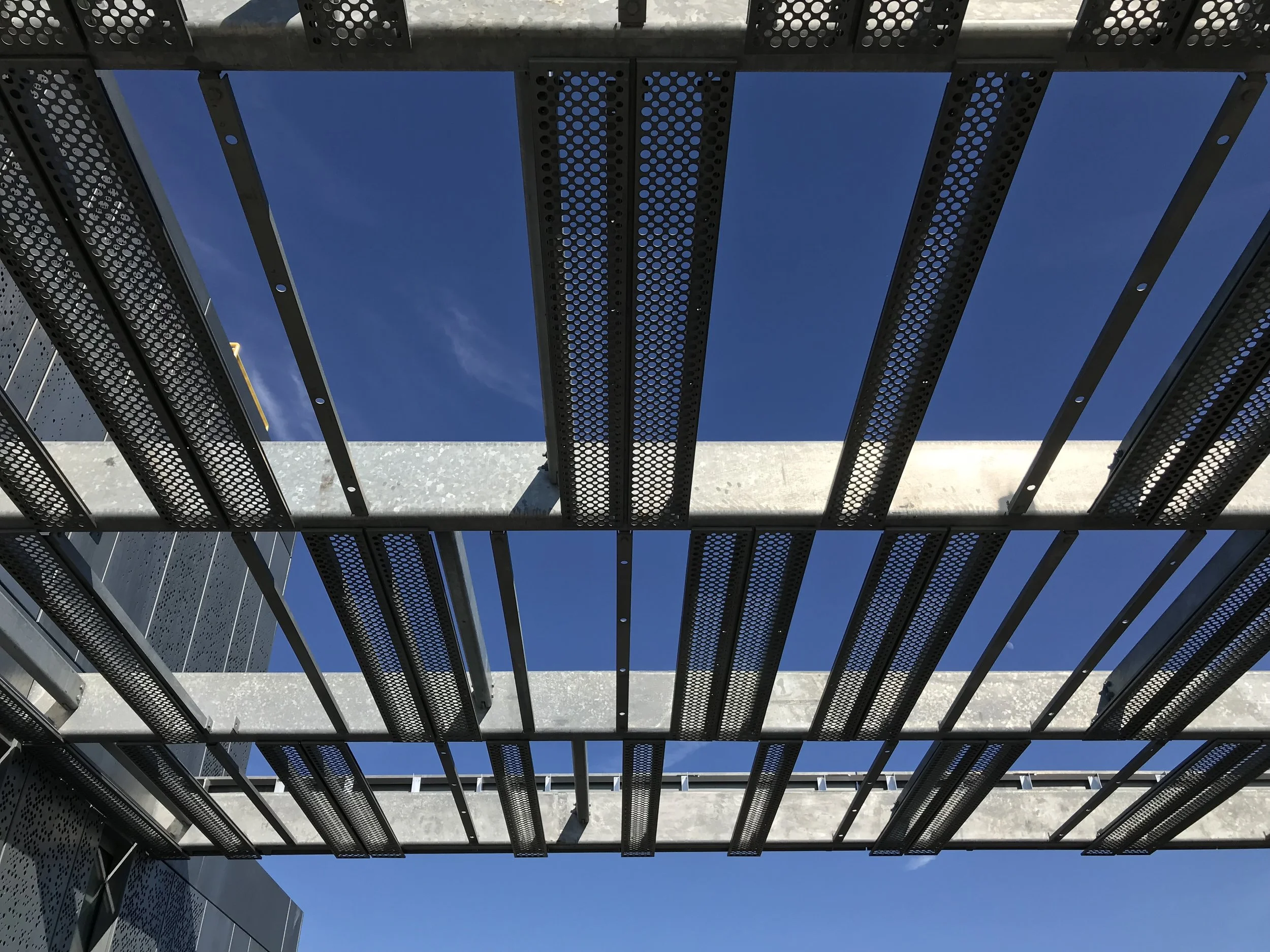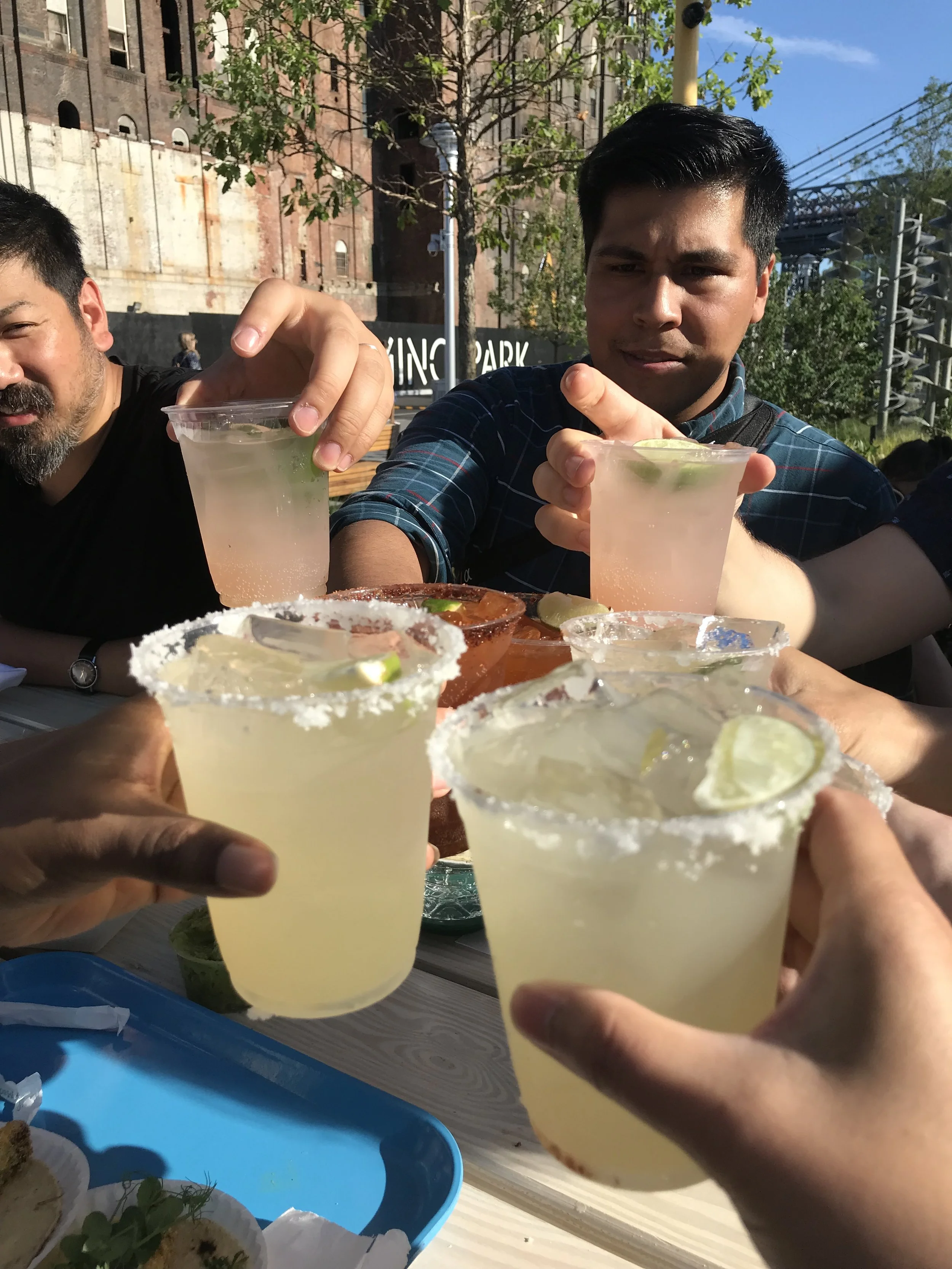Sugar Rush! Domino Factory Tour
SUGAR RUSH!
DOMINO SUGAR FACTORY TOUR
HOSTED BY DESIGN DIALOGUES • SUMMER 2019
As part of the Design Dialogues / Case Studies series that tied into a later waterfront design charrette, a group of us recently visited the Domino Redevelopment Project in Williamsburg, Brooklyn on a splendid summer day. We toured the newly-opened Domino Waterfront Park (designed by James Corner Field Operations) as well as the distinctively donut-shaped residential building behind it at 325 Kent Avenue (designed by SHoP Architects). Urban waterfront housing and development has long been a field of particular passion for DBB, from our early work at Waterside and Riverbend to to more recent projects at One Hudson Yards and Brooklyn Bridge Park.
The Williamsburg site has a rich and diverse history. Ease of access from the East River made it an appealing site for a sugar refinery in 1856. Originally named the F.C. Havemeyer & Company Refinery, the refinery was renamed in 1900 to the Domino Sugar Refinery, and is emblematic not only for the iconic neon sign that lit up the Brooklyn Waterfront but also for the packaging we still see in the supermarkets today. The refinery employed migrants from Germany, Poland, Ireland, and in later years, from Puerto Rico, Dominican Republic, and other Caribbean Islands — which played a large factor in the development of the diverse community that remains in Williamsburg today. At its peak, the factory refined over half of the nation’s sugar, and employed 4,500 workers. In 2010 ULURP approval for redevelopment of the site was given to Rafael Viñoly Architects; and in 2013 ULURP revised approval was given to Two Trees Development with SHoP Architects.
The goal of the project was to build denser in order to give more of the site back to public park land; and in our humble opinion the park is by far the most appealing aspect of the project. Beyond the spectacular river views provided from the park’s lawns, benches, and chaise lounges, it also features a mini sugar refinery playground (designed by Mark Reigelman), a fountain and seating steps, a fog bridge, beach volleyball, a playing field, a bocce court, a dog run, and a taco stand (run by ubiquitous restaurateur Danny Meyer, of course). Interspersed with these are artifacts salvaged from the original buildings that show the inner workings of the refinery: syrup tanks, gantry cranes, raw sugar warehouse columns with an elevated walkway (featuring even more amazing views), mooring bollards, screw and bucket conveyors, and a hoist bridge.
The tour ended up at the taco stand, naturally, where we discussed the history and current state of New York City residential development (among other topics) over tacos and margaritas.



